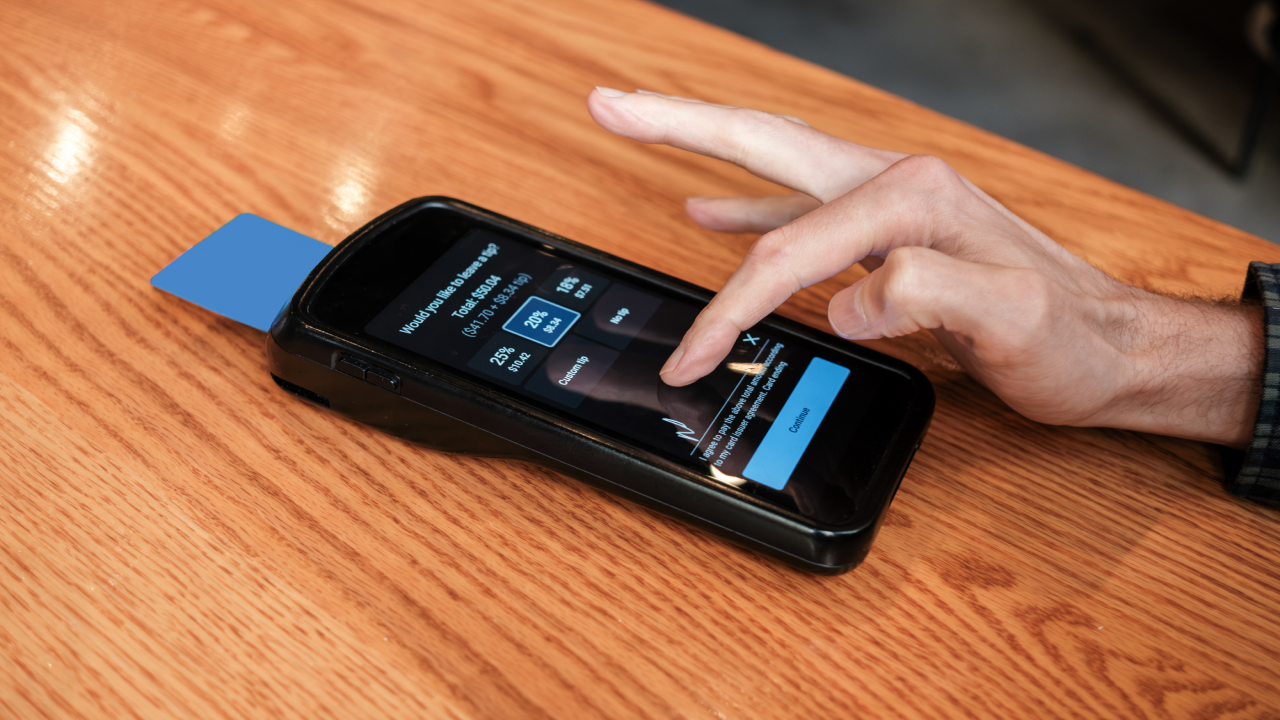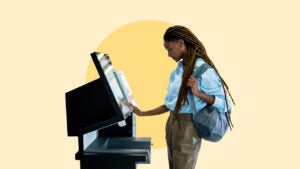Why a higher minimum wage won’t solve the tipping dilemma

Americans are fed up with tipping. About six in 10 Americans (59 percent) have a negative view toward tipping, according to Bankrate’s 2024 Tipping Culture Survey. The most common view (37 percent) is feeling that businesses should pay their employees better rather than relying so much on tips.
Tipping has become a hidden surcharge. It’s a way for businesses to funnel more money to their workers without having to foot the bill themselves. For example, Starbucks added a tip prompt to credit and debit transactions in late 2022 and about half of customers followed through with a tip, according to CNN. While a direct comparison is not available, that has to be a far higher percentage than the number of customers who put bills or coins in an old-fashioned tip jar.
You used to have to go out of your way to tip. Now you have to go out of your way not to tip at Starbucks and many other coffee shops, food trucks and retail settings. I’ve even been asked to tip at crazy places like a self-checkout machine at Newark Airport and at a pick-your-own strawberry farm.
While it’s possible to hit “no tip” or enter a custom tip of “$0.00” when presented with one of these tip prompts, many customers end up “guilt tipping” and choosing one of the suggested amounts even though they didn’t really want to. It can be awkward to say no with the cashier and other customers looking at you. About a third of Americans (34 percent) told us they’re annoyed by pre-entered tip screens and a similar share (35 percent) believe that tipping culture is out of control.
Inflation is a key part of the story
Many customers, of course, are frustrated at how much prices have risen in recent years. To them, tip requests — especially in unconventional settings — add insult to injury.
The frequency of tipping has even gone down at places where it’s traditional to tip, such as sit-down restaurants (where only 67 percent of diners always tip, down from 77 percent in 2019). Due to inflation gobbling up their paychecks, Americans have less money to go around. And they’re not feeling particularly warm and fuzzy about the whole tipping thing anyway.
To be fair, businesses are feeling the weight of inflation, as well. They’re shelling out more for rent, utilities, wages, materials, insurance and so on.
The labor component is particularly interesting. While the federal tipped minimum wage has been stuck at $2.13 per hour since 1991, many states, cities and other municipalities have instituted much higher standards for tipped and non-tipped employees. In 2024 alone, 22 states have raised their minimum wages, impacting about 10 million workers, according to the Economic Policy Institute.
California now has a $20 per hour minimum wage for fast-food workers. The cost of living in the Golden State is notoriously expensive, and I’m certainly in favor of a living wage, but there are unintended consequences.
The fast-food industry has already shed about 9,500 jobs, the Hoover Institution reports. And as labor has gotten more expensive, businesses are cutting corners by employing fewer workers and relying more on automation (for example, having customers place orders via a touch screen rather than interacting with a human cashier). In California, prices have gone up “widely and steeply” at fast food chains across the state, according to a report from Datassential.
Trump’s plan to make tips tax-free
There are also significant unintended consequences to Donald Trump’s proposal to exempt tips from federal income taxes if he regains the presidency in the upcoming election. While this sounds great for service industry workers, the unintended consequences could be massive.
For starters, the Committee for a Responsible Federal Budget says the proposal would reduce government revenues by $150 billion to $250 billion over 10 years. That could lead to a higher deficit, cutbacks in other areas or both.
The plan could also incentivize employers to expand the number of workers subject to the much lower tipped minimum wage under the guise of lower taxes. But that lower floor means a lot more of workers’ compensation depends on the whims of customers. If there aren’t enough customers or if they don’t tip well, workers would lose out.
Many service-industry workers left during the pandemic and never came back. Working for tips is precarious. Little is guaranteed, and customers can be rude, sexist, racist and so on.
Famous restauranteur Danny Meyer acknowledged this even before the pandemic and tried to do away with tipping by raising prices and sharing the largesse equally. However, there was a backlash as many customers couldn’t see past the higher prices and some employees felt they could make more money elsewhere. The policy was abandoned and tipping was reinstated.
The bottom line
Tipping is here to stay. Technology is making it easier than ever for companies to solicit tips and a higher cost of doing business means organizations are all too eager to shift the burden of paying their employees onto customers. Even as wages are rising, companies are using tips to supplement workers’ wages. You see, they’re all in favor of higher pay as long as it doesn’t come out of their pockets.
And if tips are no longer taxed, it might really be open-season for calling people tipped workers. But be careful what you wish for: I wouldn’t want a base salary of $2.13 per hour that stakes my livelihood on the whims of my customers.
Have a question about credit cards? E-mail me at ted.rossman@bankrate.com and I’d be happy to help.






